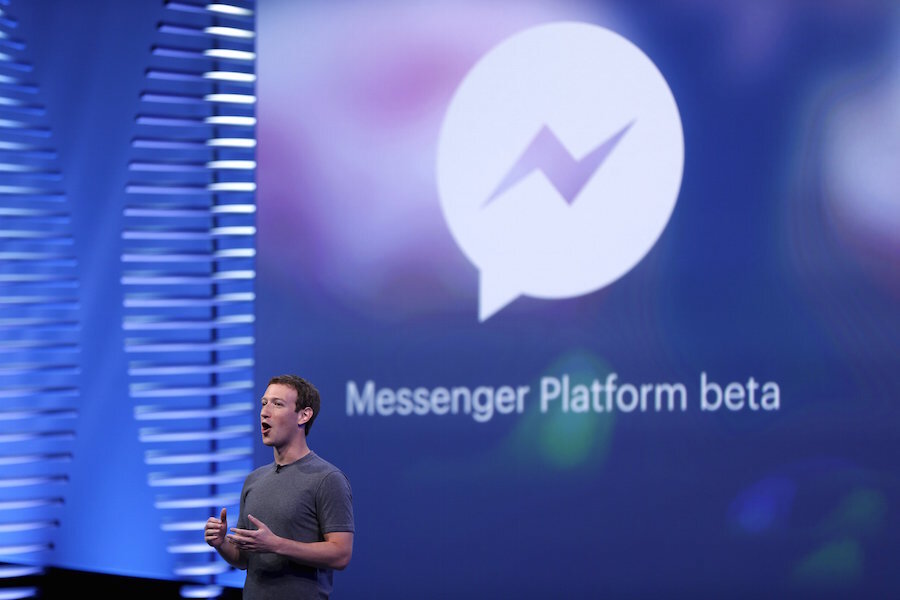Facebook doubles down on artificial intelligence
Loading...
At Facebook’s F8 developer conference this week, the company took special care to reinforce one thing to users: artificial intelligence would be the foundation of Facebook.
The social media company has been relatively transparent about how it envisions AI chatbots giving a boost to its Messenger app and changing the way consumers shop and communicate with businesses.
But throughout the conference, Facebook was even more candid about how it envisions AI becoming a cornerstone of the site – and how, in many ways, it already has.
“It's everywhere. Facebook today could not exist without AI,” said Joaquin Quiñonero Candela, Facebook's director of applied machine learning, reported Mashable.
Mr. Candela pointed out several areas where user experience is already almost entirely dependent on AI.
The newsfeed, the main thing Facebook users see, is a curated experience, he said. Though 62.5 percent of users don't realize it, according to a 2014 MIT study, what shows up on users’ newsfeeds is determined by AI programs that rank content based on perceived user preferences. In other words, the more a user likes posts about cats, the more cat posts that user is likely to see.
The same goes for advertisements. Ads are curated by machine learning programs to show relevant topics to the user. The same Facebook user finding many cat posts on their newsfeed might also see more ads for cat food, cat shelters, and adoption events.
The programs behind the rankings teach themselves to find new patterns and interpret new forms of data.
“The idea behind machine learning is that we want [programs] to be able to capture the statistical properties and features of some of these problems and be able to act on them,” said Bradley Hayes, a postdoctoral associate at MIT and the creator of the satirical AI chatbot @DeepDrumpf, in a phone interview with The Christian Science Monitor.
“Generally … you’ve given a bunch of data and you want [a program] to find the structure in it.”
For Facebook, the data comes from the various aspects of peoples' lives they post online. The structures the programs are tasked with finding could be understanding preferences, learning who users are friends with, or identifying the contents of photos.
Facebook provided a brief glimpse of how more advanced AI programs could mean more convenient services for users, beyond the newsfeed and ads. The company gave a brief preview with a feature launched last week called “automatic alternative text,” which identifies objects in an image and conveys that in text or by voice for visually impaired users. In the launch video, a picture of trees appears on a screen and the Facebook app announces to a user, “This image may contain: outdoor, cloud, foliage, flag, tree….”
Similar programs could open up accessibility for the visually impaired, but could also have major benefits for the average user. By further training AI programs to identify and classify images, it could unlock a powerful search image for users. Instead of having to sift through images to find a picture of a camping trip last year, users could potentially just write “me, tent, trees” in the search bar and have a program do the rest.
Other tech giants have also seen other potential uses for artificial intelligence, prompting major investing across the industry. Microsoft has become publicly outspoken about its future services revolving around interactive AI chatbots, which led to the infamous failed test of Chatbot Tay, and Alphabet's AI bot gained fame for being the first AI to trump human players at the game Go.
Why are tech companies moving toward artificial intelligence? "Having good machine learning models is a force multiplier for a lot of the stuff they are doing," says Dr. Hayes. It's about "scalability and performance."








